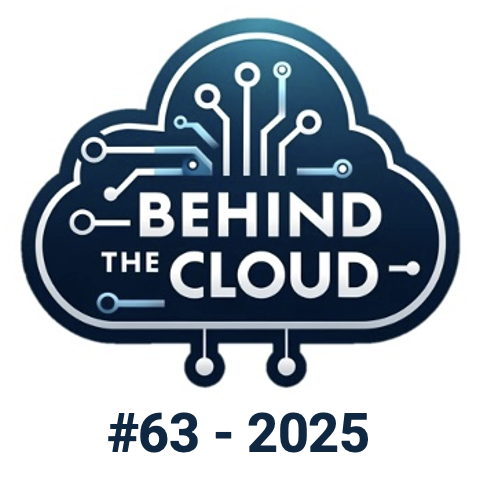
#63 - Behind The Cloud: Fundamentals in Quant Investing (7/15)
Future Data Leak – The Unavoidable Temptation?
November 2025
𝗙𝘂𝗻𝗱𝗮𝗺𝗲𝗻𝘁𝗮𝗹𝘀 𝗼𝗳 𝗤𝘂𝗮𝗻𝘁𝗶𝘁𝗮𝘁𝗶𝘃𝗲 𝗜𝗻𝘃𝗲𝘀𝘁𝗺𝗲𝗻𝘁𝘀
In this series, the Omphalos AI Research Team want to discuss the key and fundamental aspects of quantitative investing in detail and depth. In particular, our series will not be a beautiful story of how to build the holy grail of investing, but rather a long list of pitfalls that can be encountered when building such systems. It will not be a complete and exhaustive list of pitfalls, but we will try to describe those we discuss in great depth so that their significance is clear to everyone. And importantly, this will not be a purely theoretical discussion. We will provide a practical view on all of these aspects — shaped by real-world lessons and, in many cases, by our own painful and sometimes even traumatic experiences in building and testing systematic investment strategies. These hard-earned lessons are precisely why Omphalos Fund has been designed as a resilient, modular, and diversified platform — built to avoid the traps that have undone so many before.
At Omphalos Fund, we have always been clear about one thing: artificial intelligence is not magic. It is a powerful tool, but its value depends entirely on the system it operates in and the rules that guide it. When applied to asset management, this means that even the most advanced AI can only be effective if it is built on a deep understanding of how markets work — with all their complexities, inefficiencies, and risks.
That is why our latest Behind the Cloud white paper takes a step back from the technology itself. Instead, it examines the foundations of quantitative investing — the real-world mechanics, pitfalls, and paradoxes that shape investment strategies. The aim is not to present a flawless “holy grail” of investing, but to show the challenges and traps that every systematic investor must navigate.
We believe this is essential for anyone working with AI in finance. Without appreciating the underlying business of investing, AI models risk becoming black boxes that look impressive in theory but fail in practice. By shedding light on the subtle but critical issues in quantitative investment design — from overfitting to diversification, from the illusion of normal distributions to the reality of risk of ruin — we provide context for why our platform is built the way it is: modular, transparent, and resilient.
The goal of this white paper is simple:
To help readers understand that using AI in asset management is not only about smarter algorithms — it’s about building systems that are grounded in strong investment fundamentals and designed to survive the real world of markets.
Chapter 7
Future Data Leak – The Unavoidable Temptation?
In quantitative investing, some of the worst errors don’t come from bad ideas—they come from great ones executed with just a touch of invisible contamination.
Future data leakage—also known as look-ahead bias—is one of the most dangerous and subtle pitfalls in quantitative finance. It occurs when information from the future accidentally enters the historical training or testing phase of a model. The result is deceptively strong backtest performance that falls apart in live trading.
And the worst part? You often don’t know it happened – until it’s too late.
The Silent Killer of Quant Research
Future data leak isn’t a rookie mistake—it happens to the best. A few misaligned timestamps. A macro dataset that’s been revised post-publication. A trading signal that accidentally peeks at the day’s close while being calculated at the open. These aren’t rare bugs. They’re structural landmines in the modern quant workflow.
As Brown et al. (2013) showed, even academic papers can fall prey to look-ahead bias due to subtle data handling errors. Bailey and López de Prado (2014) went further, warning that many machine learning results in finance are “false discoveries” caused by such contamination. And in the broader ML field, Kohavi et al. (2019) underlined how critical time-aware validation is in avoiding leakage—yet it’s still not the default in many platforms.
Where It Hides (and How to Find It)
Understanding where leakage originates is the first step:
- Timestamp mismatches: Data aligned on calendar days, but not on when it was actually available.
- Revised vs. point-in-time data: Economic indicators and company fundamentals often get updated. If you use the latest version in a backtest, you’re not simulating reality.
- Platform defaults: Many data science tools weren’t built with financial data in mind—and will happily “shuffle” your time series unless explicitly told not to.
- Code shortcuts: Minor efficiencies in logic (e.g. using today’s close to predict today) can introduce major distortions.
- Inadvertent peeking: Using future information for feature engineering, feature selection, or model tuning—even indirectly—compromises integrity.
- Data transformation traps: A particularly subtle leak arises when applying transformations across the full dataset—including the test period—before backtesting. For instance, calculating a normalization factor or average over the entire time range and then applying it retroactively contaminates the model with future knowledge.
Once it creeps in, leakage inflates performance metrics, disguises overfitting, and undermines trust in your entire process.
Research Spotlight
- Brown et al. (2013): Exposed how look-ahead bias distorts financial research when timestamp and data handling errors go unnoticed.
- Bailey & López de Prado (2014): Developed formal statistical tests to detect data leakage and measure its effects on false discovery rates.
- Kohavi et al. (2019): In machine learning, stressed the importance of temporal validation to prevent data contamination in time series.
Omphalos: Point-in-Time as Principle
At Omphalos Fund, future data leakage is treated as a governance risk, not just a technical one.
- All datasets are point-in-time – down to individual timestamps.
- No revised data is used in training agents; only the values that would have been visible at the moment a trade was made.
- Automated validation layers run checks for potential leakage paths in model pipelines.
- Independent oversight ensures that research outputs are verified by teams not involved in their development.
- Independent code reviews are conducted regularly to detect subtle sources of leakage and enforce clean separation between training and testing logic.
- Time-aware cross-validation is standard across all model evaluations.
- Forward testing is systematically used to verify the integrity of model assumptions. We combine this with a parallel simulation of the same period to compare how strategies perform under live-like conditions versus modeled expectations. This double-layered approach helps ensure that no future data contaminates the decision logic.
This rigor isn’t just about best practices—it’s about protecting the credibility of every decision the system makes.
A Case in Point: Look‑Ahead Bias in Hedge Fund Performance Studies
In the paper ‘Survival, Look‑Ahead Bias and the Persistence in Hedge Fund Performance‘ by Guillermo Baquero, Jenke ter Horst and Marno Verbeek (Journal of Financial & Quantitative Analysis 40(3), 2005) they analysed U.S. hedge funds and explicitly modelled how look‑ahead bias (a form of future data leak) and survivorship bias distort performance persistence estimates. They show that once you correct for look‑ahead bias the apparent persistence of returns shrinks significantly.
Moreover, in a companion paper ‘Look‑Ahead Benchmark Bias in Portfolio Performance Evaluation‘ by Gilles Daniel, Didier Sornette & Peter Wöhrmann (2008) they quantified “look‑ahead benchmark bias” — for example, using end‑of‑period benchmark constituent lists rather than those available at the time can overstate returns by up to 8% pa for a strategy referencing the S&P 500.
This is a real academic case of the “silent killer” we describe in this Chapter 7 — not a fictional hedge fund, but empirical evidence that leakage materially affects both research and live‑strategy outcome.
Humility > Overconfidence
The most dangerous thing about future data leakage? You don’t know it’s there until your live returns tell you otherwise. That’s why the best quant teams treat model development with radical humility.
At Omphalos, no model is trusted because it’s complex or elegant. It’s trusted because it performs without access to tomorrow’s newspaper. To verify this, we rely on forward testing in parallel with simulation – widely considered the most effective way to detect hidden leakage. This method allows us to compare predicted outcomes with real-time behavior under identical conditions, ensuring that performance is rooted in actual foresight, not accidental hindsight.
In quant finance, your greatest enemy isn’t the market. It’s your own illusion of foresight.
👉 In the next chapter, we’ll explore ‘Trend Following – Success or Death by a Thousand Cuts?’ A look into one of the oldest quant strategies – why it still works (sometimes), when it fails (often), and what its future might look like in an AI-powered investment landscape.
Stay tuned for Behind The Cloud, where we’ll continue to explore the frontiers of AI in finance and investing.
If you missed our former editions of “Behind The Cloud”, please check out our BLOG.
© The Omphalos AI Research Team – November 2025
If you would like to use our content please contact press@omphalosfund.com




